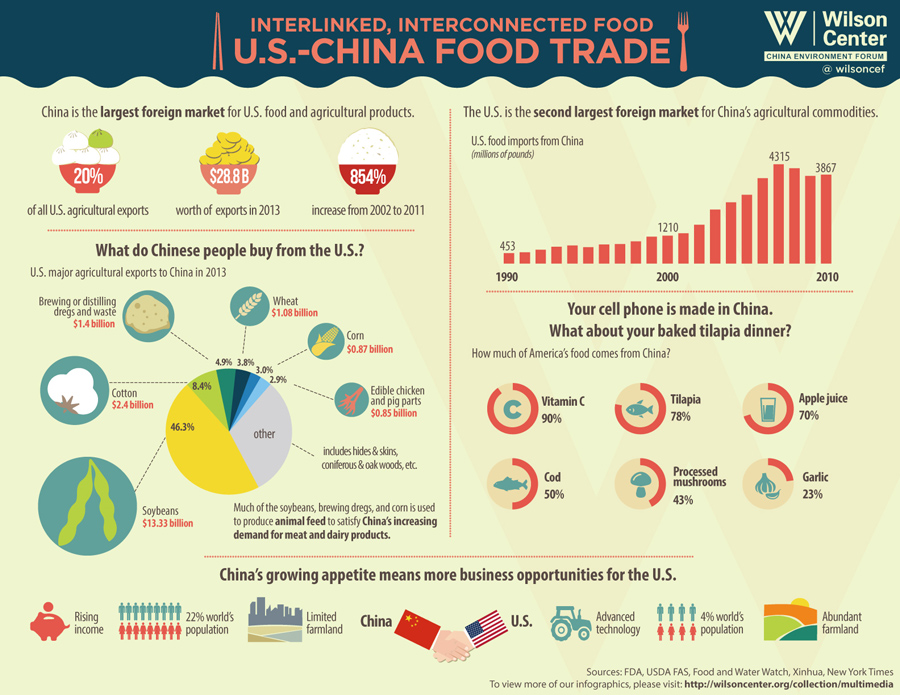-
Infographic: The Rise of U.S.-China Agricultural Trade
China faces a dilemma. It is home to 20 percent of the world’s population but only seven percent of the world’s water resources and nine percent of the world’s arable land. At the same time, a rising middle class is demanding more food. Over the last 30 years, China’s meat demand has quadrupled.
In 2004, China became a net food importer for the first timeThese dynamics are pushing China to look overseas to feed growing appetites. In 2004, it shifted from being a net food exporter to importer for the first time.
The United States has a trade surplus with China when it comes to agricultural products and that surplus has grown considerably over the last decade. In 2013, the United States exported $28.8 billion worth of agricultural products to China, while importing $10.5 billion. China is now the top destination for U.S. agricultural exports overall. Almost half of these exports are soybeans, commonly used to produce animal feed.
In the other direction, U.S. food imports from China have also ramped up over the last decade. Nearly 8 out of 10 tilapia sold in the United States come from China, 70 percent of the apple juice, and half the cod.
China’s growing demand for food is opening up new opportunities for U.S. agriculture and strengthening already strong trade ties.
Sources: Financial Times, Ministry of Agriculture (China), PBS, U.S. Department of Agriculture, Xinhua.
Image Credit: Siqi Han/China Environment Forum.
Topics: agriculture, Asia, China, China Environment Forum, consumption, development, economics, environment, featured, food security, land, natural resources, U.S., water
 A Publication of the Stimson Center.
A Publication of the Stimson Center.




